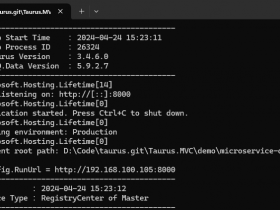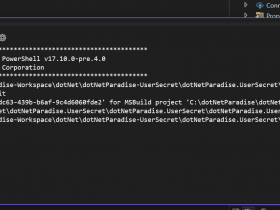- A+
所属分类:.NET技术
多态
1 认识多态
1.1 基本概念
多态是同一个行为具有多个不同表现形式或形态的能力,意味着有多重形式。在面向对象编程范式中,多态性往往表现为"一个接口,多个功能"。
在 C# 中,每个类型都是多态的,因为包括用户定义类型在内的所有类型都继承自 Object。
多态性分为静态的和动态多态。在静态多态性中,函数的响应是在编译时发生的。在动态多态性中,函数的响应是在运行时发生的。
- 静态多态:函数重载、运算符重载
- 动态多态:vob(virtual 虚函数,override 重写,base 父类)、抽象函数、接口
1.2 使用
class GameObject { public string name; public GameObject(string name) { this.name = name; } //虚函数 可以被子类重写 public virtual void Atk() { Console.WriteLine("游戏对象进行攻击"); } } class Player : GameObject { public Player(string name) : base(name)//调用父类的构造函数 { } //重写虚函数 public override void Atk() { Console.WriteLine("玩家对象进行攻击"); } } class Monster : GameObject { public Monster(string name) : base(name) { } public override void Atk() { base.Atk();//base代表父类,可以通过它来保留父类的行为,会调用一次父类的方法 Console.WriteLine("怪物对象进行攻击"); } } class Father { public void SpeakName() { Console.WriteLine("Father的方法"); } } class Son : Father { public new void SpeakName() { Console.WriteLine("Son的方法"); } } //Main //用父类取装载子类的对象时,有两个同名的方法,会优先调用父类的 多态就用来解决这类问题 Father f = new Son(); f.SpeakName(); (f as Son).SpeakName(); GameObject p = new Player("abc");//虚函数和重写解决了问题 p.Atk(); GameObject m = new Monster("def"); m.Atk(); /* 输出: Father的方法 Son的方法 玩家对象进行攻击 游戏对象进行攻击 怪物对象进行攻击 */ 2 abstract 抽象类和抽象方法
2.1 抽象类
用 abstract 关键字修饰的类。
特点:
- 不能被实例化
- 可以包含抽象方法
- 继承抽象类必须重写其抽象方法
abstract class Thing//抽象一类物品 { public string name; //可以在抽象类中写抽象函数 } class Water : Thing { } 2.2 抽象方法
用 abstract 修饰的方法,又叫 纯虚方法
特点:
- 只能在抽象类中声明
- 没有方法体
- 不能是私有的
- 继承后必须实现,用override重写
abstract class Fruits { public string name; public virtual void Test() { //虚方法可以写逻辑 } public abstract void Bad();//抽象方法 } class Apple : Fruits { //虚方法在子类中可以选择是否重写 //抽象方法一定要重写 public override void Bad() { } } 3 接口
3.1 基本概念
关键字:interface,接口是行为的抽象规范,是抽象行为的“基类”,各种类通过继承它来实现对应的行为。
接口声明规范:
- 不包含成员变量
- 只包含方法、属性、索引器、事件
- 成员不能被实现
- 成员可以不写访问修饰符,而且不能是私有的
- 接口不能继承类,但是接口可以继承另一个接口
接口使用规范:
- 类可以继承多个接口
- 类继承接口后,必须实现接口中所有成员
特点:
- 它和类的声明类似
- 接口是用来继承的
- 接口不能被实例化,但可以作为容器来存储对象
3.2 声明
/* interface 接口名 { } 接口名:I+帕斯卡命名法 */ interface IFly { void Fly();//方法 string Name//属性 { get; set; } int this[int index]//索引 { get; set; } event Action doSomething;//事件 } 3.3 使用
接口用来继承:
- 类可以继承1个类,n个接口
- 继承了接口后,必须实现其中的内容,而且必须为 public 的
- 实现的接口函数,可以加 visual 再在子类中 override
- 接口遵循里氏替换原则
class Animal { } class Tiger : Animal, IFly//继承类和接口 { //实现接口内容 public void Fly() { } public string Name { get; set; } public int this[int index] { get { return 0; } set { } } public event Action doSomething; } 3.4 接口继承接口
- 接口继承接口时,不需要实现
- 类继承接口后,去实现接口的所有内容
interface IWalk { void Walk(); } interface IMove : IFly, IWalk { } class Test : IMove//实现所有内容 { public int this[int index] { get => throw new NotImplementedException(); set => throw new NotImplementedException(); } public string Name { get => throw new NotImplementedException(); set => throw new NotImplementedException(); } public event Action doSomething; public void Fly() { throw new NotImplementedException(); } public void Walk() { throw new NotImplementedException(); } } 3.5 显示实现接口
- 当一个类继承两个接口,但是接口中存在着同名方法时使用
- 注意:显示实现接口时,不能写访问修饰符
interface IAtk { void Atk(); } interface ISuperAtk { void Atk(); } class Player : IAtk, ISuperAtk { //显示实现接口:接口名.行为名 void IAtk.Atk() { } void ISuperAtk.Atk() { } } 4 sealed 密封方法
4.1 基本概念
- 密封方法:用 sealed 修饰的重写函数,让虚方法或抽象方法不能再被重写,和 override 一起出现
- 密封类:用 sealed 修饰的类,让类不能被继承
4.2 使用
abstract class Animal { public string name; public abstract void Eat(); public virtual void Speak() { Console.WriteLine("giao"); } } class Person : Animal { public override void Eat() { } public override void Speak() { } } class WhitePerson : Person { public sealed override void Eat()//不能重写了 { base.Eat(); } public override void Speak() { base.Speak(); } } 



